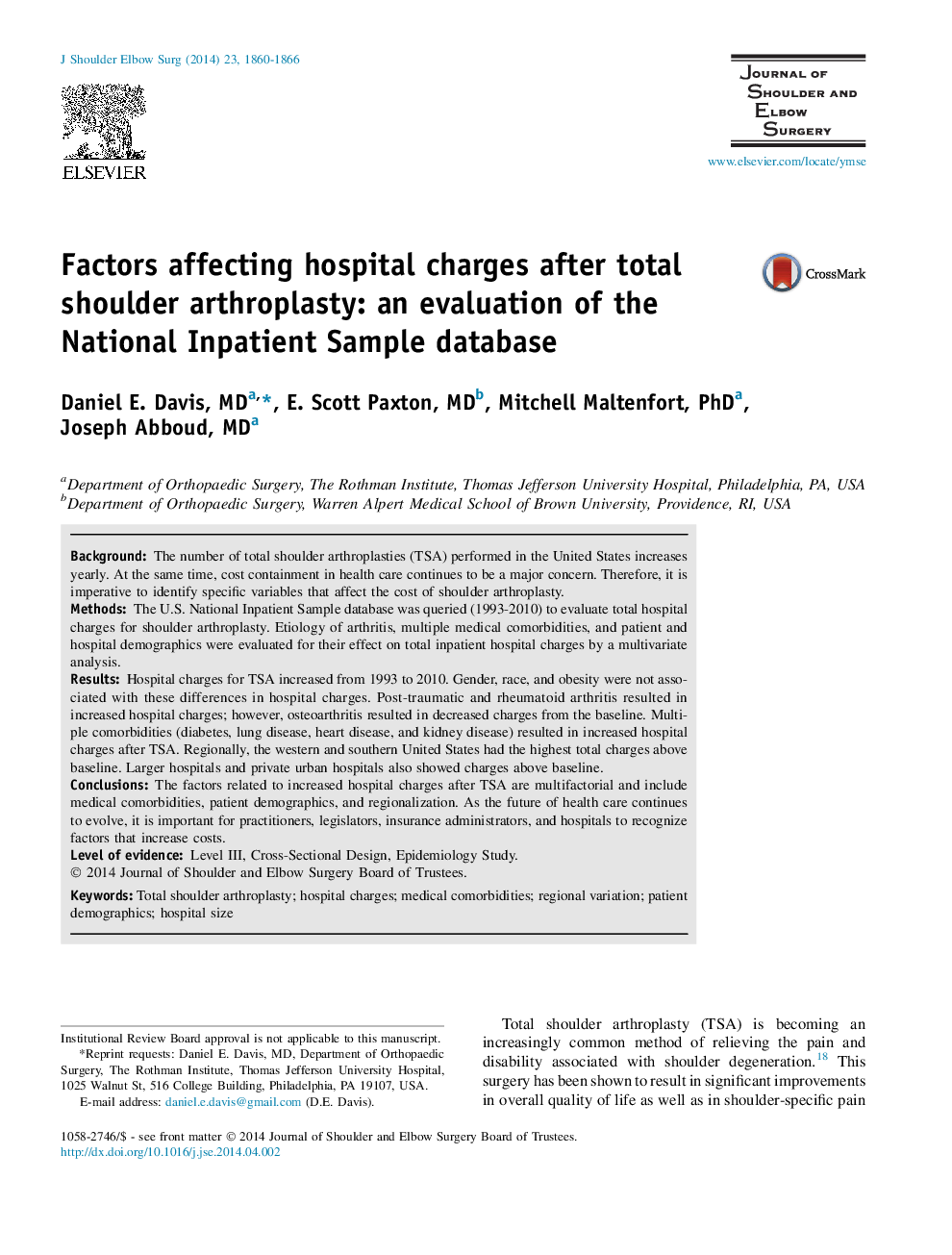| Article ID | Journal | Published Year | Pages | File Type |
|---|---|---|---|---|
| 4073429 | Journal of Shoulder and Elbow Surgery | 2014 | 7 Pages |
BackgroundThe number of total shoulder arthroplasties (TSA) performed in the United States increases yearly. At the same time, cost containment in health care continues to be a major concern. Therefore, it is imperative to identify specific variables that affect the cost of shoulder arthroplasty.MethodsThe U.S. National Inpatient Sample database was queried (1993-2010) to evaluate total hospital charges for shoulder arthroplasty. Etiology of arthritis, multiple medical comorbidities, and patient and hospital demographics were evaluated for their effect on total inpatient hospital charges by a multivariate analysis.ResultsHospital charges for TSA increased from 1993 to 2010. Gender, race, and obesity were not associated with these differences in hospital charges. Post-traumatic and rheumatoid arthritis resulted in increased hospital charges; however, osteoarthritis resulted in decreased charges from the baseline. Multiple comorbidities (diabetes, lung disease, heart disease, and kidney disease) resulted in increased hospital charges after TSA. Regionally, the western and southern United States had the highest total charges above baseline. Larger hospitals and private urban hospitals also showed charges above baseline.ConclusionsThe factors related to increased hospital charges after TSA are multifactorial and include medical comorbidities, patient demographics, and regionalization. As the future of health care continues to evolve, it is important for practitioners, legislators, insurance administrators, and hospitals to recognize factors that increase costs.
